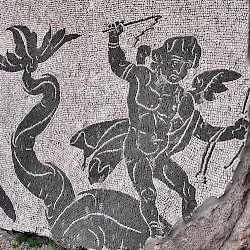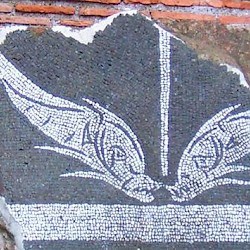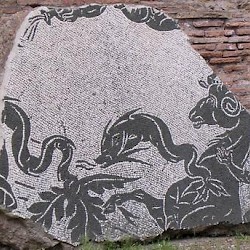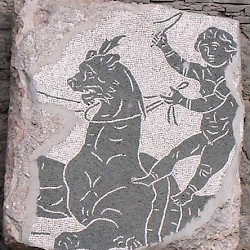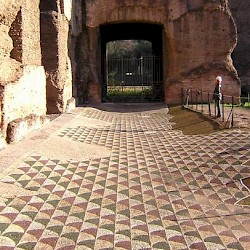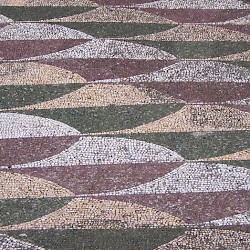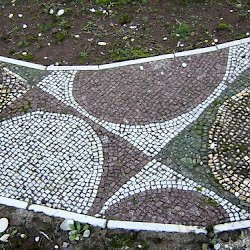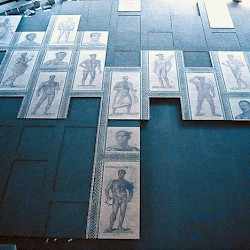Rome, Baths of Caracalla
Q502098Baths of Caracalla: most famous of all ancient Roman thermae, built between 211 and 224 by the emperors Caracalla, Heliogabalus, and Severus Alexander.
A political project
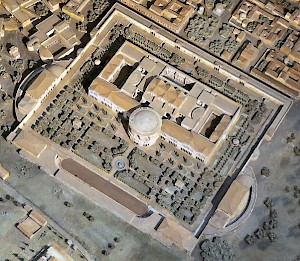
Among the most splendid monuments of ancient Rome is the building known as the Thermae Antoninianae, or, as we call them, "the baths of Caracalla". Today, the roofs have collapsed, many walls have fallen down, the statues have been removed, and the decoration is gone, but yet, the ruins belong to the most impressive remains of Antiquity.
The emperor Caracalla was a son of Septimius Severus, succeeded his father in 211, and was to reign until 217. In the late second century, the role of the Senate had diminished and the Severan dynasty was sometimes looking for support among others classes of Roman society, like the equestrian order and the inhabitants of the big cities. For them, the new baths were built, not far from the Via Appia, so that every visitor of Rome would immediately see them.
Building the Baths
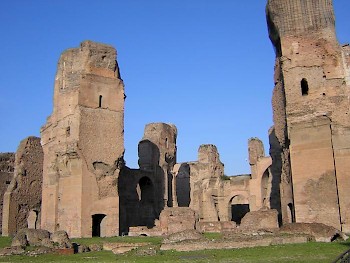
Approximately thirteen thousand prisoners of war from the Scottish campaign of Septimius Severus had to be used to level the building site. In addition, some six thousand tradesmen were engaged every day in the actual construction, which required no fewer than twenty-one million bricks. To make the ornamentation six hundred marble workers required 6300 m³ of marble.
The complex consists of the real bathhouse and a park that surrounded it, which was created by Caracalla's successors Heliogabalus and Severus Alexander. Water was brought to the bathhouse by a new branch of the Aqua Marcia aqueduct, which was called Aqua Antoniniana. One arch survives and is now, incorrectly, called Arch of Drusus.
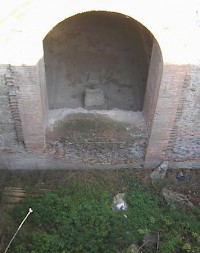
The central building of the complex measured 214 by 114 meters and consisted of four levels, two above ground and two below. It is not difficult to be impressed by it even today: the imposing ruins are still thirty meters high. The entrance halls, called basilicae thermarum, were in the northwest and southeast, and measured some 50 by 20 meters. Some archaeologists believe these halls were also used by athletes and served as some sort of gym. A strong argument for this interpretation is the mosaic that once graced the hall and shows all kinds of athletes. Discovered in 1824, it is now in the Vatican Museums.
The bathhouse was symmetrically built along a northeast-southwest axis. Visitors who entered the city from the southeast and wanted to clean themselves after their trip entered the baths here. They could hire a slave who took care of their belongings. There were lockers too, although they had no locks. We know from a bathhouse in Pompeii that you did not have to remember the number of your safe, but an erotic picture.
Building elements
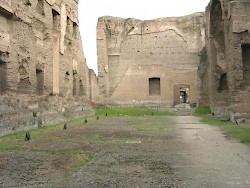
Some sixteen hundred people at one time could use the cold baths, tepid baths, hot baths, steam baths and the open air bath, which was the size of a modern, Olympic-sized swimming pool (50 meters in length). After your visit to the gym, you could relax over here.
As was usual since the age of Trajan, the building was constructed in such a way that the visitors could easily walk from one facility to another, with a main corridor between the two entrance halls. You would pass the swimming pool, the cold bath, the tepid baths (where people would spend most of their time), and the warm baths. There was also a hot bath, which was flanked by two steam baths.
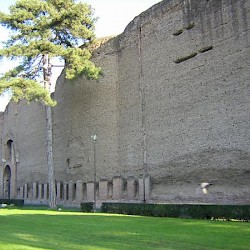 Rome, Baths of Caracalla, Outside wall |
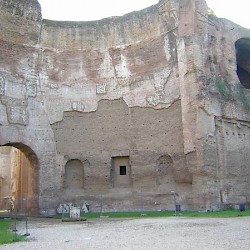 Rome, Baths of Caracalla, southeastern "basilica thermarum" |
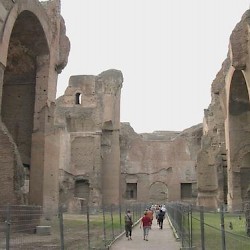 Rome, Baths of Caracalla, Main corridor |
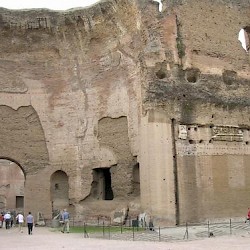 Rome, Baths of Caracalla, northwestern "basilica thermarum" |
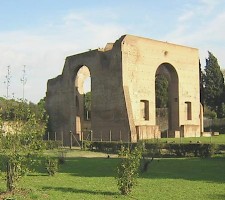
In 216 the main building was complete. Caracalla's distant cousin and successor Heliogabalus (218-222) erected the side-buildings, but it was not until the time of Severus Alexander (222-235) that the finishing touches were put on the structure. Beside the bathhouse, the complex was home to shops, an athletic track, sports fields, pleasure gardens, massage rooms, saunas, two reading rooms, a hair salon, perfumeries, cafeterias, music pavilions, and a museum.
In addition to all of this, one of the side-buildings housed an underground temple to Mithras. In the subterranean structures, hundreds of stokers burned ten tons of wood every day to keep the water at the right temperature. The delivery of fuel was such an important task that Severus Alexander counted it among his personal responsibilities.
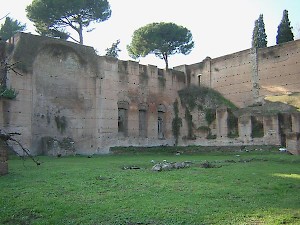
Modern publications often mention brothels, but this is because for a long time scholars saw a prostitute in every barmaid and masseuse. It says more about today's historians than it does about the ancients themselves. Another possible mis-interpretation concerns two halls in the southwest, which have been interpreted as reading rooms. However, the rooms are situated next to a large water reservoir, and the author of the present article is not convinced that the engineers of Antiquity had already reached the level stupidity needed to build a library on such a risky place.
Decoration
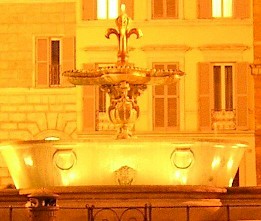
The complex was decorated with mosaics and statues. Some of these can be seen today in the Vatican Museums, like the mosaic of the athletes and the Torso of the Belvedere, which shows Hercules or the Greek hero Ajax contemplating suicide. Several statues, which once belonged to the Farnese collection, were later given to the king of Naples, and are now part of the collection of the Museo archeologico nazionale in that city. They include a famous muscle-bound Hercules, which is a Roman copy of a work by Lysippus of Sicyon (372-306). Other well-known statues from the Baths of Caracalla are the "Farnese Flora", "the Tyrannicides", and the "Farnese Bull", a group that represents the punishment of a lady named Dirce, who was tied to a wild bull. Two large bath tubs of Egyptian grey granite are now near the Palazzo Farnese in Rome, on the Piazza Farnese.
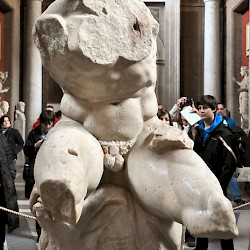 Rome, Baths of Caracalla, the Belvedere Torso (Heracles) |
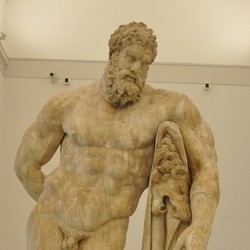 The Farnese Hercules |
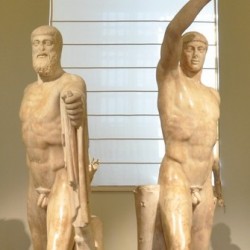 Rome, Baths of Caracalla, Harmodius and Aristogeiton |
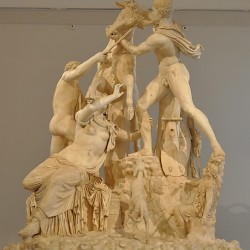 The Farnese Bull |
The walls were covered with slabs of marble; the upper register was decorated with stucco. Everywhere, the floors were covered with brightly colored mosaics. Others were black and white and showed maritime figures, like fish, sea horses, and erotes. The colored mosaics were often abstract, and were made from all kinds of natural stone, like grey granite from Egypt, yellow marble from Numidia, green-veined marble from Carystus and green and purple porphyry from Sparta and Egypt. Anyone reclining in one of these baths would have experienced the vastness of the Mediterranean empire.
Bathing
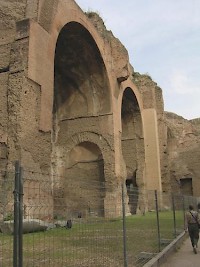
Bathing was extremely popular. The epitaph of one Tiberius Claudius Secundus says
Balnea, vina, Venus corrumpunt corpora nostra;
sed vitam faciunt balnea, vina, Venus,
which means that
Baths, wine, and sex spoil our bodies;
but baths, wine, and sex make up life.
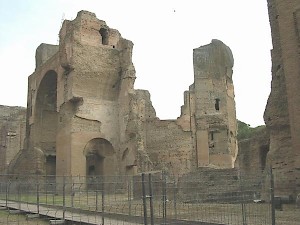
The hundreds of visitors to the baths must have made a prodigious noise. An advisor to Nero, Seneca (4-65), describes the cacophony of a bathhouse in the provinces:
Just imagine all those voices, which make you begin to hate your own ears. When those musclemen work out by swinging around lead weights in their hands and exert themselves (or pretend to), you can hear them groaning. Whenever they exhale the air they have been holding in, you can hear it escape with a squeaking, squealing sound. Whenever you see a passive type who is content with a cheap massage, you can hear from the sound of the hand striking the shoulder if the hand was flat or cupped. A ballplayer running in to announce the score is the straw that broke the camel's back.
Then picture a troublemaker or a pickpocket being arrested and the man who likes to hear himself sing in the bath, and to that you can add those who plop down into the water with a loud splash. In addition to these people, whose noises are at least natural, you have to imagine the shaver who is continually shouting in his piercing voice in order to attract the attention of passers-by. He never closes his mouth, except when he is pulling out armpit hairs and lets someone else shriek in his place. Then there are the alcohol vendors with their varied cries, the sausage sellers, the pastry bakers and the barmen, each one praising his services in every possible way.
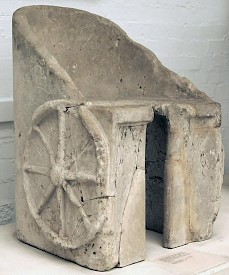
The din at the Baths of Caracalla must have been at least as bad. It is tempting to think that life in a city with so many bathhouses was healthy. This is a misconception, as can be seen from the writings of Aulus Cornelius Celsus (first century CE), who prescribed baths for people suffering from dysentery, fever caused by typhus and malaria, tuberculosis (in particular tabes dorsalis), paralysis, tumors of the liver, cholera, bowel disorders, diarrhea, worms and maggots, gonorrhea, rabies, boils, psoriasis, sprue, diseases of the eye and public lice that have attached themselves to the eyelashes. It was only in the second century that the emperor Hadrian hit upon the idea of reserving special hours in the baths for the sick.
Throughout the ages moralists have wondered whether or not the Romans engaged in mixed bathing. The answer is that mixed bathing was officially "not done," but few seemed to care. Cicero and Pliny the Elder complained about this practice, and the emperors Hadrian, Marcus Aurelius and Severus Alexander banned it. However the fact the ban had to be repeated merely proves that it was ignored, as the Roman authorities lacked the means to make sure such rules were followed. The poet Martial regarded mixed bathing as an expression of a liberal morality, and most Romans must have felt the same way.
Late Antiquity
Later emperors, like Aurelian and Diocletian, have ordered repairs to the baths of Caracalla, and we know that the Ostrogothic king Theodoric also restored a part of the complex that had fallen into disrepair. The end came in 537, when Rome was besieged by Witigis and the water supply was destroyed.
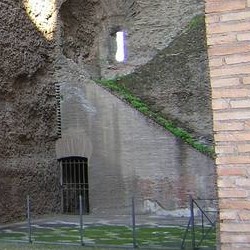 Rome, Baths of Caracalla, Vaults and staircase |
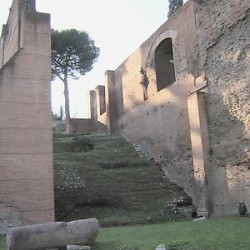 Rome, Baths of Caracalla, Western entrance |
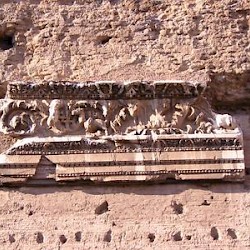 Rome, Baths of Caracalla, Decoration |
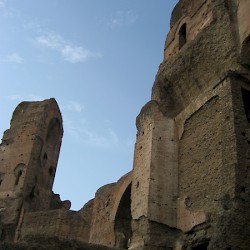 Rome, Baths of Caracalla, Vaults |
